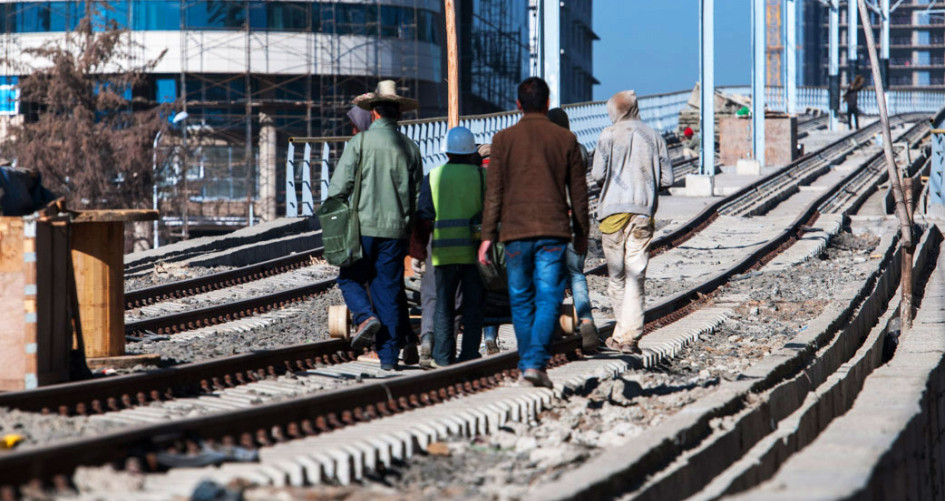The Ethiopian Railways Corporation (ERC) was on time and on track for the first test run of their new Addis Ababa light rail in early February
But building the towers, laying the tracks, and firing up the trains are only the first steps towards Ethiopia building a culture of sustainable, cleaner public transportation. The next giant step is to establish a thriving domestic rail industry, centered on hydroelectric power, that provides jobs and opportunities for the Ethiopian people.
To do this, the Ethiopian Railways Corporation requires further assistance from the international community and has registered three Nationally Appropriate Mitigation Actions (NAMAs) that will clear an even faster path towards social and economic sustainability.
NAMAs are a tool developed under the UN Framework Convention on Climate Change (UNFCCC) and are becoming a powerful agent for developing countries to measurably lower greenhouse gas emissions at the same time as delivering the transformational social, economic, and environmental change their citizens need. These transformational actions are based on the specific national characteristics and circumstances of the host country. (Sign up on our NAMA News website to get all the latest news and information about how NAMAs are working to the advantage of countries and those who support them)

Ethiopia’s comprehensive rail plan
Two perpendicular tracks, each approximately 17 km long, mark the first phase of Ethiopia’s master plan to deliver both urban and long distance rail services to its growing population. This ambitious initiative will boost the Ethiopian economy, alleviate congestion, and avert large amounts of greenhouse gas emissions.
The ERC’s ultimate goal to shift freight and passenger transport from road to rail is centered on principles of environmental, social, and economic sustainability. To achieve the former, and also contribute to global climate change efforts, the trains will run on 100% renewable hydroelectric power.
Financial viability will come by first repaying the initial loans with revenue from riders and shippers, and also employing local workers to bolster their income and keep it within the national economy.
Social benefits will be realized through equitable access to goods and services as community hubs sprout up along the rail routes.
To finance the light rail, China’s Export-Import bank issued loans to the ERC for 85% of the $465 million project and Ethiopia covered the remainder. The ERC also purchased the required equipment and labor from Chinese companies, and recently signed a five-year contract with China Railways Group and Shengen Meter Group to run and maintain the system.
Three New NAMAs for Transformational Change
The Railway Academy of Ethiopia
The Railway Academy NAMA would establish a school to train Ethiopians as managers, engineers, technicians, and researchers. Once the academy is up and running it would graduate skilled railroad professionals who could assume full responsibility for railway operations. The estimate for a feasibility study that includes creating a business plan, formulating curricula, and more is $300,000.
Designing Transit-Oriented Communities
A second transformational NAMA details a project to launch transit-oriented development (TOD) along the light rail as outlined in the ERC’s overall strategy. This NAMA calls for a pilot study to increase capacity, remove barriers, and establish a regulatory framework in preparation for large-scale implementation. TOD is a new approach to an age-old concept; designing communities around the most viable forms of transportation, which in the face of climate change means walkable urban centers and mass transit. According to the registry entry, TOD will increase transport safety, reduce pollution, increase ridership, and mitigate greenhouse gases directly and indirectly. The pilot project is estimated to cost $8.9 million, the bulk of which would pay for an “urban design plan, technical design studies, and detailed market studies and development prospectus. Through the ERC, the government of Ethiopia will provide co-funding of $1.2 million for the project.
Preparing for the Effects of Climate Change
The third NAMA touches on adaptation to climate change by proposing a vulnerability assessment for the railroad. Earth’s climate is already changing and the ERC is keen to understand how those changes will affect the railway over time, and to take measures to lessen their impact on the trains, tracks, riders, and cargo. Estimated cost for the assessment is $150,000.
Increased Mitigation over Time
Support for these three NAMAs is vital to the success and longevity of the ERC, and the potential greenhouse gas mitigation that would soar over time with the smooth running of a well-maintained mass transit running on renewable fuel.
Visit The Ethiopian Railway web site: http://www.erc.gov.et/
For more details on Ethiopia’s entries in the NAMA Registry go to (not mobile friendly at this point – sorry!): http://www4.unfccc.int/sites/nama/SitePages/Country.aspx?CountryId=59
For comprehensive information on Ethiopia’s national circumstances and efforts to address climate change please refer to their Initial National Communication to the UNFCCC.
Pic of workers on Addis Ababa light rail by Claudio Forner
